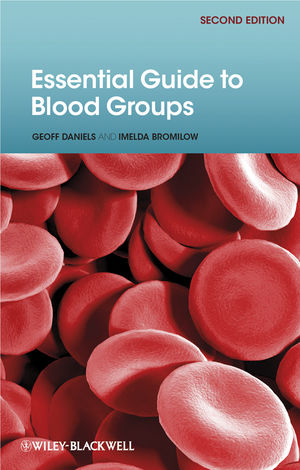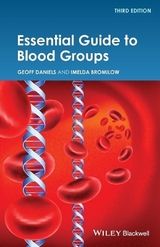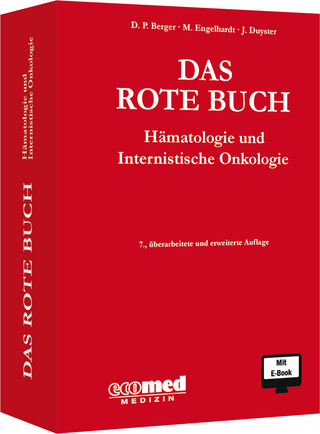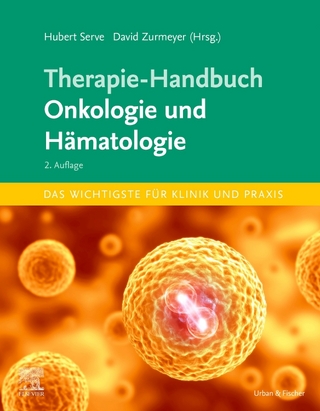
Essential Guide to Blood Groups
Wiley-Blackwell (an imprint of John Wiley & Sons Ltd) (Verlag)
978-1-4443-3530-9 (ISBN)
- Titel ist leider vergriffen;
keine Neuauflage - Artikel merken
The second edition of Essential Guide to Blood Groups is a pocket-sized book containing four-color text together with schematic figures and tables. The book comprises an introduction to blood groups, followed by chapters on techniques, information on various blood groups, antibodies, quality assurance in immunohaematology, and it concludes with chapters on troubleshooting in the laboratory, and FAQs. It also covers the serology, inheritance, biochemistry and molecular genetics of the most important blood group systems.
Abbreviations. 1 An introduction to blood groups. What is a blood group? Blood group antibodies. Clinical importance of blood groups. Biological importance of blood groups. Blood group systems. Blood group terminology and classification. 2 Techniques used in blood grouping. Factors affecting antigen-antibody reactions. Temperature. Time and ionic strength. pH. Antigen density. Stages of haemagglutination reactions. Direct agglutination. Indirect agglutination. Enzyme techniques. Antiglobulin tests. Elution techniques. Automation of test procedures. Flow cytometry. Molecular blood group genotyping. 3 The ABO blood groups. Introduction. ABO antigens, antibodies, and inheritance. A 1 and A 2 . Antigen, phenotype, and gene frequencies. ABO antibodies. Importance of the ABO system to transfusion and transplantation medicine. Biochemical nature of the ABO antigens. Biosynthesis of the ABO antigens and ABO molecular genetics. H, the precursor of A and B. ABH secretion. H-deficient red cells. Further complexities. Acquired changes. Associations with disease and functional aspects. 4 The Rh blood group system. Introduction - Rh, not rhesus. Haplotypes, genotypes, and phenotypes. Biochemistry and molecular genetics. D antigen (RH1). Molecular basis of the D polymorphism. D variants. Clinical significance of anti-D. D testing. C, c, E, and e antigens (RH2, RH4, RH3, RH5). Clinical significance of CcEe antibodies. Molecular basis of the C/c and E/e polymorphisms. Other Rh antigens. Compound antigens: ce, Ce, CE, cE (RH6, RH7, RH22, RH27) and G (RH12). C w , C x , MAR (RH8, RH9, RH51). VS, V (RH20, RH10). Rh-deficient phenotypes - Rhnull and Rhmod. Putative function of the Rh proteins and RhAG. 5 Other blood groups. The Kell system. Kell glycoprotein and the KEL gene. Kell system antigens. Kell system antibodies. K o phenotype. McLeod syndrome, McLeod phenotype, and Kx (XK1) antigen. The Duffy system. Fy a (FY1) and Fy b (FY2). Anti-Fy a and -Fy b . Fy3 and Fy5. The Duffy glycoprotein, a receptor for chemokines. Duffy and malaria. The Kidd system,. Jka (JK1) and Jkb (JK2); anti-Jka and -Jkb. Jk(a-b-) and Jk3. The Kidd glycoprotein is a urea transporter. The MNS system. M (MNS1) and N (MNS2); anti-M and -N. S (MNS3) and s (MNS4); anti-S and -s. S- s- U- phenotype and anti-U. Other MNS antigens and antibodies. The Diego system. Band 3, the red cell anion exchanger. Di a (DI1) and Di b (DI2); anti-Di a and -Di b . Wr a (DI3) and Wr b (DI4); anti-Wr a and -Wr b . Other Diego system antigens. The Lewis system. Some other blood group systems. P. Lutheran. Yt. Xg. Scianna. Dombrock. Colton. Landsteiner-Wiener (LW). Chido/Rodgers. Gerbich. Cromer. Knops. Indian. I. Antigens that do not belong to a blood group system. 6 Clinical significance of blood group antibodies. Antibody production and structure. Factors affecting the clinical significance of antibodies. Antibody specificity. Haemolytic transfusion reactions (HTR). Intravascular red cell destruction. Extravascular red cell destruction. Haemolytic disease of the fetus and newborn (HDFN). Cross-matching for infants under 4 months old. Autoantibodies. Tests to assess the potential significance of an antibody. Decision-making for transfusion. 7 Blood grouping from DNA. Fetal blood grouping. Blood group typing of patients and donors. 8 Quality assurance in immunohaematology. Achieving total quality. Frequency and specificity of control material. Quality requirements for safe transfusion practice. Checklist of critical control points. Laboratory errors, root cause analysis (RCA) and corrective and preventative action (CAPA). 9 Trouble-shooting and problem-solving in the reference laboratory. ABO grouping. Rh grouping. Problems in antibody screening, identification, and cross-matching. 10 Frequently asked questions. Recommended reading. Index.
| Erscheint lt. Verlag | 8.10.2010 |
|---|---|
| Zusatzinfo | Illustrations |
| Verlagsort | Chicester |
| Sprache | englisch |
| Maße | 137 x 214 mm |
| Gewicht | 202 g |
| Einbandart | Paperback |
| Themenwelt | Medizinische Fachgebiete ► Innere Medizin ► Hämatologie |
| Studium ► 1. Studienabschnitt (Vorklinik) ► Physiologie | |
| Schlagworte | Hämatologie |
| ISBN-10 | 1-4443-3530-8 / 1444335308 |
| ISBN-13 | 978-1-4443-3530-9 / 9781444335309 |
| Zustand | Neuware |
| Haben Sie eine Frage zum Produkt? |
aus dem Bereich



